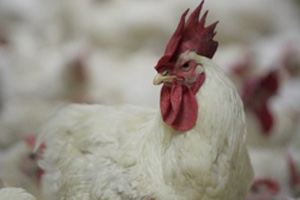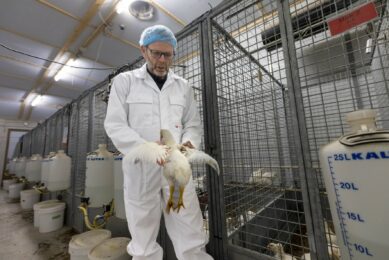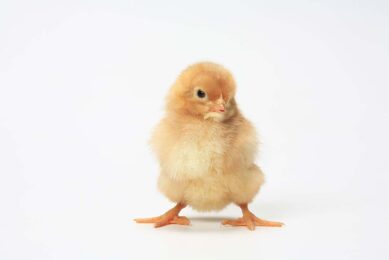Reducing the environmental impact of poultry breeding

Improving the sustainability of poultry production involves limiting its environmental impact and maintaining effectiveness.
It has recently been shown that genetic selection on the ability of chickens to digest wheat at 23 d of age can decrease chicken excretion without decreasing BW at this age. The aim of this study was to check whether selection on digestibility modified excretion and growth performance over the whole production cycle.
The 2 divergent lines selected for high (D+) and low (D-) apparent metabolizable energy corrected for 0 N balance (AMEn) values were compared with a reference line used at the beginning of the selection experiment (RL) to evaluate the potential excretion improvement that could be expected with such selection.
These 3 lines were therefore compared for growth and excretion (raw and relative to feed intake, fresh and dry excreta weights, and moisture content of excreta) from 4 to 53 d. Between 4 and 7 d, 17 and 21 d, and 49 and 53 d, AMEn and N and P excretion rates were also compared between the 3 lines.
Furthermore, body composition (breast meat and abdominal fat yields), bone breaking strength, and meat quality traits (lightness, redness, yellowness, and ultimate pH) were compared between lines at 53 d.
Over the whole rearing period, D+ birds excreted significantly less fresh and dry excreta (−56 and −61%) than D- and RL birds (−6 and −26%). Similarly, N and P excretion rates of D+ birds were 13% to 30% less than those of D- birds and 12% to 19% less than RL birds, depending on age.
These excretion differences may be related to the differential development of the gastrointestinal tract. Differences between lines were already present at 7 d for relative gizzard weight and the weight of the upper to the lower part of the gastrointestinal tract ratio. Anatomic differences were maximum at 23 d for all traits except for relative weight of the duodenum. At slaughter age, BW, breast and fat yields, and meat color did not differ between D+ and RL birds, but D- birds were fatter than D+ and RL birds. Finally, ultimate meat pH was 1% to 2% greater in RL birds than in the D+ and D- lines.
In conclusion, this study showed that selection of chickens for AMEn is a possible way to reduce the environmental impact of production over the whole rearing period without a negative impact on growth, body composition, or meat quality.
Source: Journal of animal science













